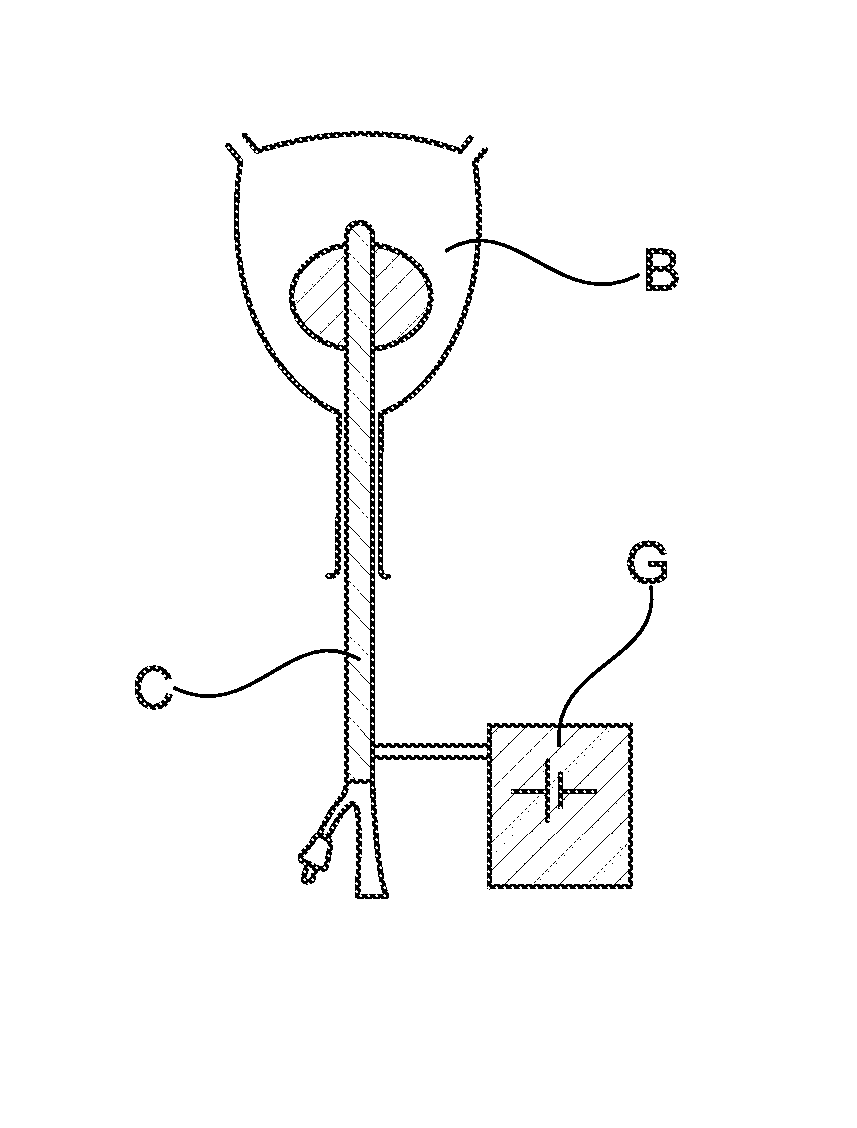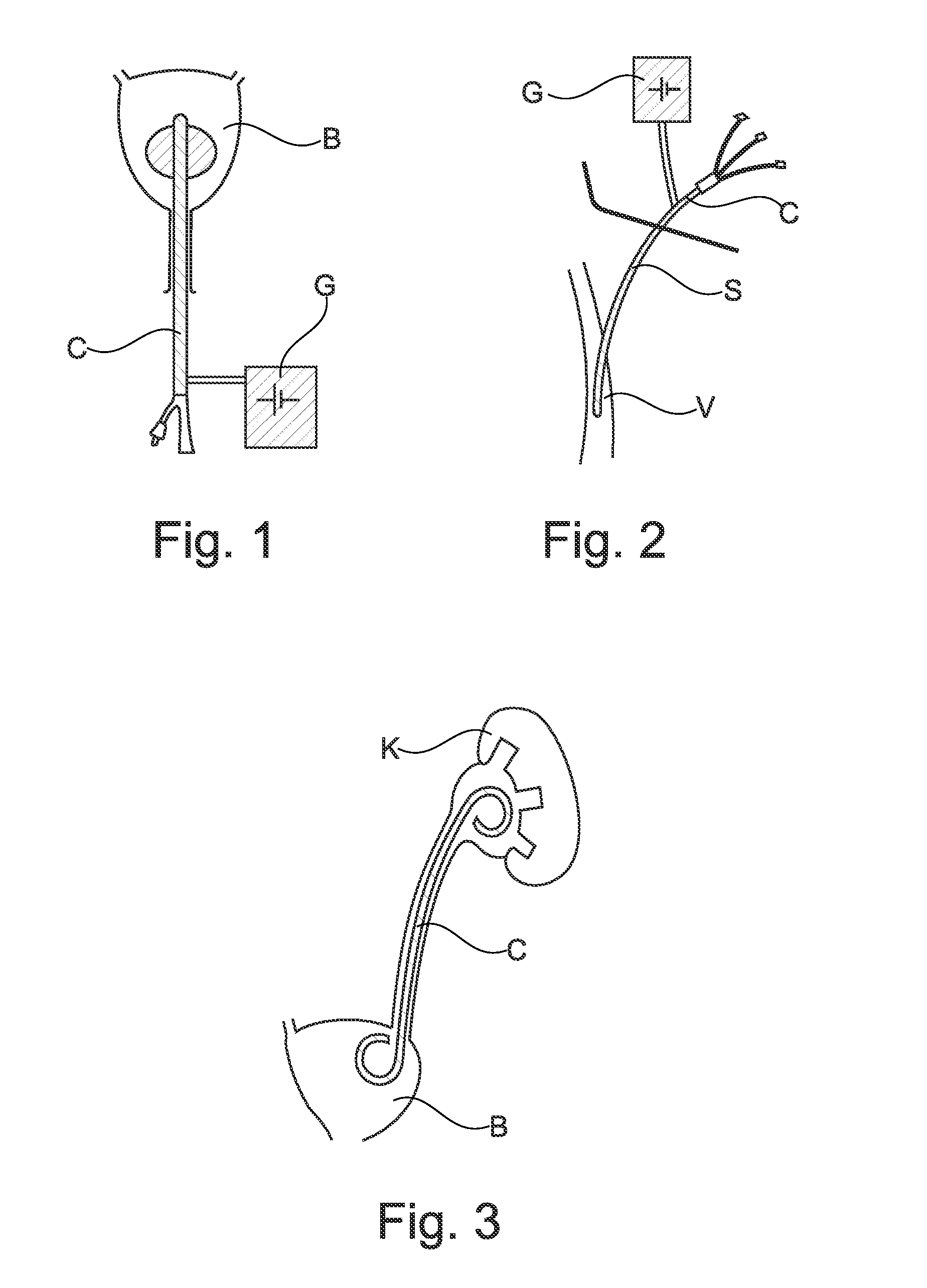Prevention of bacterial adherence and growth in an urological implant
a technology of urological implants and urological stents, applied in the field of medical devices, can solve the problems of bacterial colonization rate, burden on health care costs, and significant affecting the quality of life of patients, and achieve the effect of reducing bacterial growth and biofilm formation
- Summary
- Abstract
- Description
- Claims
- Application Information
AI Technical Summary
Benefits of technology
Problems solved by technology
Method used
Image
Examples
example
Feasibility Study in vitro
[0078]The reduction of the buildup of naturally forming conditioning films was proven by applying different current densities to a platinum electrode chip in a flow chamber subjected to urine flow. The film formation and desorption in artificial urine was analyzed by highly mass sensitive quartz crystal microbalance (QCM) and surface sensitive atomic force microscopy. The dissolution behavior was later tested by dipping the formed films on the QCM crystal in acidic or base solution. Finally, bacterial adherence, growth and survival were assessed using a defined environment with Proteus mirabilis in artificial urine.
A. Experimental
a. Platinum Electrode Chip and Flow Cell Fabrication Procedure
[0079]The chip was designed to contain six equal electrode surfaces inside the flow chamber (FIG. 9). The substrate was fabricated using a glass microscopy cover slide, that was cleaned for 5 minutes with Piranha solution, a mixture of H2SO4 and H2O2, used remove organic...
PUM
 Login to View More
Login to View More Abstract
Description
Claims
Application Information
 Login to View More
Login to View More - R&D
- Intellectual Property
- Life Sciences
- Materials
- Tech Scout
- Unparalleled Data Quality
- Higher Quality Content
- 60% Fewer Hallucinations
Browse by: Latest US Patents, China's latest patents, Technical Efficacy Thesaurus, Application Domain, Technology Topic, Popular Technical Reports.
© 2025 PatSnap. All rights reserved.Legal|Privacy policy|Modern Slavery Act Transparency Statement|Sitemap|About US| Contact US: help@patsnap.com



